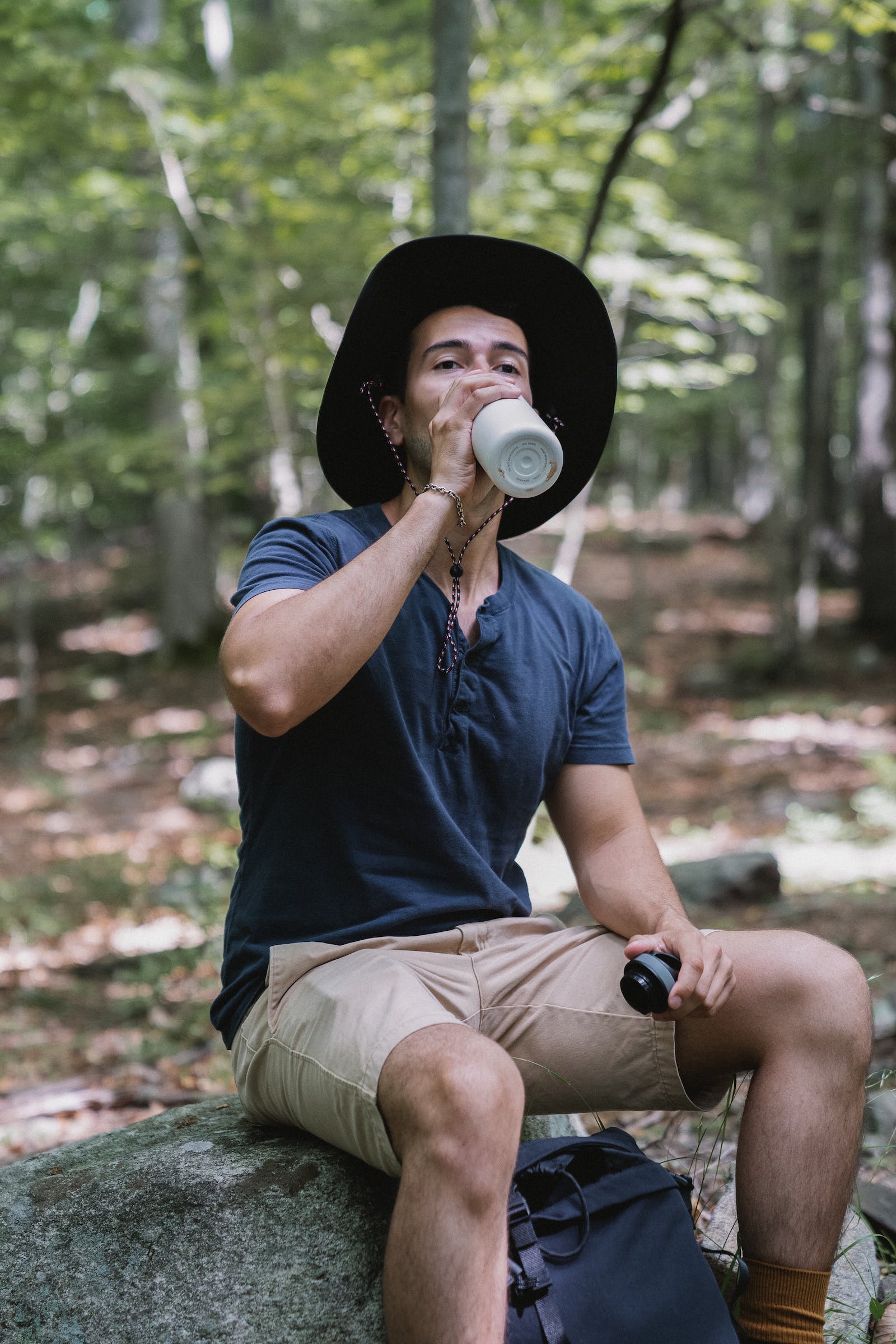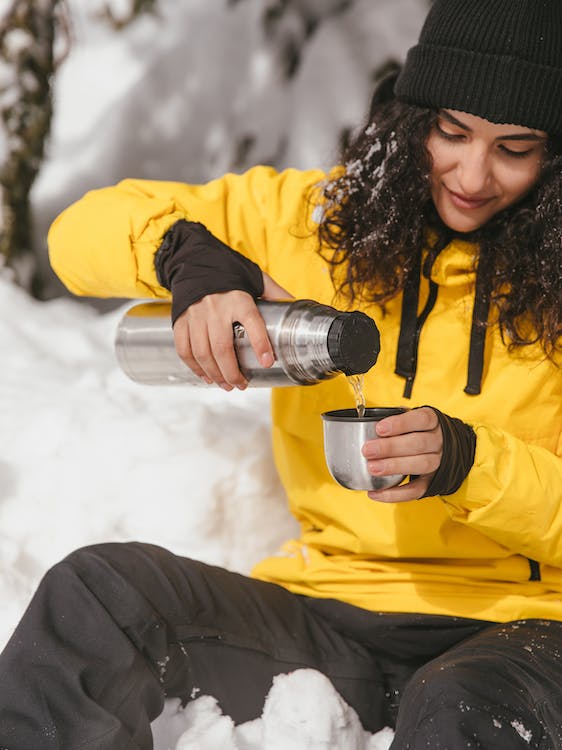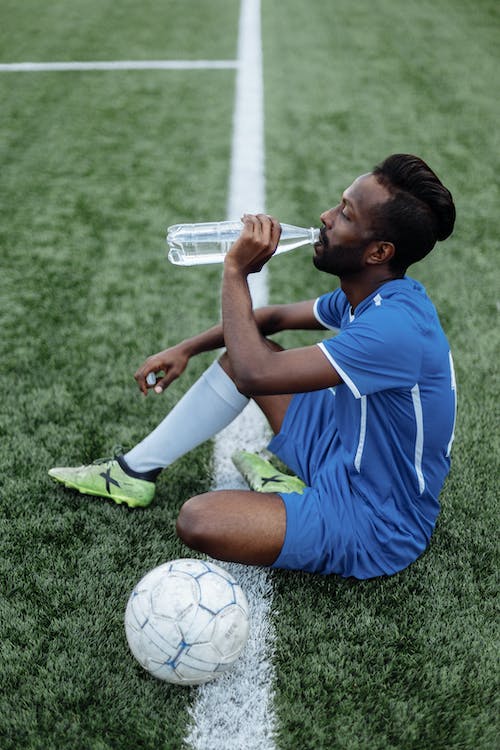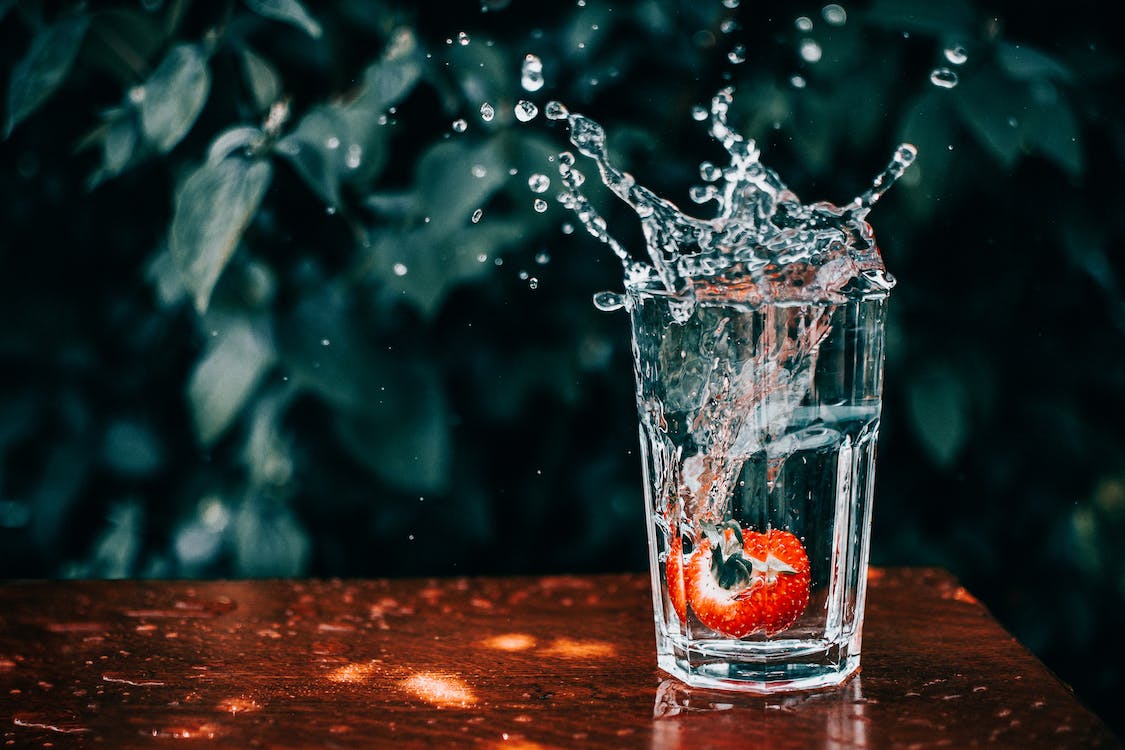When weather permits (or even if it doesn’t sometimes!) you’re probably like me in that you love to take in the great outdoors in all its many facets.
With so much to take in and focus on, sometimes we forget that internally we need to be paying attention to our outdoor hydration. If we don’t drink enough water, it can lead to a range of negative effects on your body that can be debilitating to say the least.
Whether you’re hiking, fishing, biking, running, kayaking, sports, or even just enjoying a day at the beach or some hours in your backyard, it’s vitally important that you stay hydrated. In fact, it’s essential for your health and safety.
In this blog post, we’ll explore why staying hydrated is so important during outdoor activities, and share some tips for ensuring you stay “well-lubed” during all your outside adventures!
When you’re outside, your body is constantly working to regulate its temperature. As you sweat, you lose water and electrolytes, which are essential for maintaining your body’s balance of fluids and electrolytes. If you don’t replace these fluids and electrolytes, you can become dehydrated, which can have quite serious consequences.
The CDC even helps us by putting out THIS BROCHURE outlining how much water is needful to keep our bodies from getting ill & keeping us from the many negative repercussions of dehydration.
There are some tell-tale signs that occur when you lose more fluids than you take in. They are:
Heat exhaustion is a common risk of dehydration during outdoor activities. When you’re exposed to high temperatures, your body sweats to regulate your temperature. If you don’t replace the fluids you lose through sweating, your body can become dehydrated, leading to heat exhaustion. Symptoms of heat exhaustion include fatigue, weakness, dizziness, and nausea. If left untreated, heat exhaustion can progress to heatstroke, which is a life-threatening emergency.
Muscle cramps are another risk of dehydration during outdoor activities. When your body is dehydrated, it can lead to electrolyte imbalances, which can cause muscle cramps. These cramps can be painful and debilitating, making it difficult to continue with your activity. If you experience muscle cramps during an outdoor activity, it’s important to take a break, rehydrate, and stretch to alleviate the cramps.

Dehydration can also lead to reduced performance during outdoor activities. When you’re dehydrated, your body has to work harder to maintain its normal functions, which can lead to fatigue and decreased stamina. This can impact your ability to perform at your best during your activity, making it more difficult to reach your goals.
Dehydration can also increase your risk of injury during outdoor activities. When your body is dehydrated, your muscles and joints are more prone to injury. This is because dehydration can lead to decreased flexibility and range of motion, making it more difficult to move your body properly. Additionally, dehydration can impact your mental clarity, making it more difficult to make quick decisions and react to changes in your environment.
On the flip side, staying hydrated can have a number of benefits for your body and overall well-being during outdoor activities. They are:

Staying hydrated can significantly improve your physical performance during outdoor activities. When your body is properly hydrated, your muscles and joints are able to function at their best, allowing you to move more easily and with greater range of motion.
Hydration also helps regulate your body temperature, which is essential when engaging in activities that cause you to sweat. By staying hydrated, you can improve your endurance, strength, and overall athletic performance.
Dehydration can also impact your mental clarity, making it more difficult to focus and make decisions. When you’re properly hydrated, your brain is able to function at its best, allowing you to think more clearly and react to changes in your environment more quickly.
This can be especially important during outdoor activities that require quick decision-making, such as hiking, mountain biking or any of the fast-paced sports contests that make up so much of our society sun seasons.
Staying hydrated can also help reduce your risk of injury during outdoor activities. When your body is dehydrated, your muscles and joints are more prone to injury, as dehydration can lead to decreased flexibility and range of motion. By staying properly hydrated, you can reduce your risk of muscle cramps, strains, and other injuries.
Staying hydrated can also improve the health of your skin. When your body is dehydrated, it can lead to dry, flaky skin, as well as an increased risk of sunburn.
By drinking enough fluids, you can help keep your skin hydrated, reducing the risk of dryness and flakiness. Additionally, staying hydrated can help your skin recover more quickly from sun exposure, reducing the risk of sun damage.
Staying hydrated can also have a positive impact on your overall health. Proper hydration helps regulate your body’s functions, from digestion to circulation. It can also help flush toxins from your body, improving your immune system and reducing the risk of illness. By staying properly hydrated during outdoor activities, you can improve your overall health and well-being.
So now that we understand the importance of staying properly hydrated when engaged in outdoor activities, the question is… how much water does our human body actually need?
The answer can vary depending on age, weight, gender, and level of activity, but according to the American Council on Exercise, the average person should drink at least 17 to 20 ounces of water 2 to 3 hours before (not during or after!) engaging in physical activity. During the activity, the person should then drink an additional 7 to 10 ounces of water every 10 to 20 minutes to maintain proper hydration levels.
And afterwards? Chug down another 8 ounces within 30 minutes to 1 hour of the outside activity to replenish all those fluids you lost under the sun.

These guidelines are just a starting point though. They may not be sufficient for everyone. Factors such as heat, humidity, altitude, and intensity of the activity can all affect how much water the body needs. In general, the more intense the activity and the longer the duration, the more water the body will need to stay properly hydrated.
One way to determine how much water you need during outdoor activities is to monitor your urine output. If your urine is light yellow or clear, you are likely properly hydrated. If your urine is dark yellow or amber, you may be dehydrated and should drink more fluids.
If you’re engaging in more strenuous activities, or in very hot and humid conditions, you may need to drink even more water to stay properly hydrated. Always pay attention to your body’s signals, such as thirst and fatigue, and drink water if there’s any hint of thirst.
It’s also important to note that water isn’t the only fluid that can help hydrate the body during outdoor activities. Electrolyte drinks, such as sports drinks or coconut water, can help replenish fluids lost during the activity and restore electrolyte balance. However, it’s important to choose a drink that is low in sugar and high in electrolytes to avoid consuming excess calories.
If that sounds like a lot of H2) to put drink down, just remember the vital benefits you get from the efforts – improving your performance, game & final results, reducing your risk for injury or sickness, and boosting your overall health and well-being. I’d say that’s a win worth toasting for!

So how can you ensure you stay properly hydrated during outdoor activities? Here are some tips:
Staying hydrated is essential when engaging in outdoor activities, but it can sometimes be difficult to remember to drink enough fluids while on the go. Here are some tips for staying hydrated during outdoor activities:
The easiest way to stay hydrated during outdoor activities is to bring plenty of water with you. Bring a reusable water bottle or hydration pack and make sure to fill it up before heading out. Having water readily available will make it easier to remember to drink throughout the activity.
If you really want to be prepared, use a hydration pack. These are backpacks with built-in water bladders that not only hold H20 without leaking, but usually also keep it nice and cold even when the sun’s beating down.
If you plan on tallying up some miles running or biking, there’s no more convenient way to have water straw literally right near your lips during your outdoor activities. They allow you to drink water on the go without having to stop and take out a water bottle.
For example, I like to use THIS ONE when running my Half-Marathons.
Thirst is not always a reliable indicator of hydration levels. By the time you feel thirsty, you may already be dehydrated. Instead, try to drink fluids regularly before you feel thirsty to stay ahead of dehydration.
If you have trouble remembering to drink fluids during outdoor activities, set a reminder on your phone or watch. This can be especially helpful during longer activities like lounging on a beach or when you’re distracted by the surroundings.

In addition to drinking fluids, you can also stay hydrated by eating foods with high water content, such as watermelon, cucumber, and celery. These foods can help supplement your fluid intake and provide additional nutrients to fuel your activity.

During intense or long-duration activities, especially sports contests, it’s important to replenish electrolytes lost through sweat. Electrolyte drinks, such as sports drinks or coconut water, can help replenish these electrolytes and improve hydration levels. However, be mindful of the sugar content and choose a drink with a lower sugar content or consider making your own electrolyte drink with natural ingredients.
The amount of water you need during outdoor activities can vary depending on the environment. In hot and humid conditions, you will likely need to drink more fluids to stay properly hydrated. On the other hand, if you’re in a cooler climate, you may not need to drink as much water but should still stay mindful of hydration levels.
Adding mint, berries, lemon or lime to water can enhance the taste and make it more refreshing. Mint leaves can add a cool and crisp taste, while berries can add a subtle sweetness. Lemon and lime slices can add a citrusy flavor and a touch of acidity, making the water taste more refreshing.
I always have, in my fridge, a pitcher of fresh water with something added in for flavor. I grow Spearmint & Peppermint, & all kinds of berries in my backyard and, let me tell ya, it tastes AMAZING when I add any of those fresh bursts of flavor to my water and pour it over ice. YUMMM!!!
So if the taste of water is kinda “meh” for you, throw in some of your favorite natural flavors & make it more of a treat. It’ll help you to drink more water and stay properly hydrated outside, where you need it most.


So with Spring now “sprung”, and all of us getting out more and more to take in all that Mother Nature has to offer, let’s be deliberately mindful of getting our bodies what they absolutely are craving during outdoor physical exertion – WATER.
It’s crucial for your health. It’s crucial for your safety. And by drinking enough water and electrolytes, you can improve performance, reduce injuries, and improve overall health and, in a nutshell… just feel and perform a whole lot better!
So here’s to enjoying all of our outdoor adventures to the fullest. And staying “well-splashed” on the inside to boot!
See ya outdoors!!
TJ